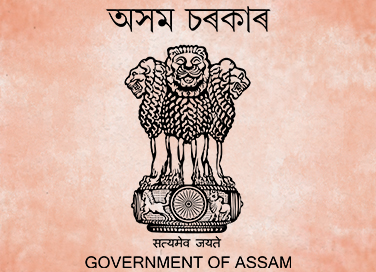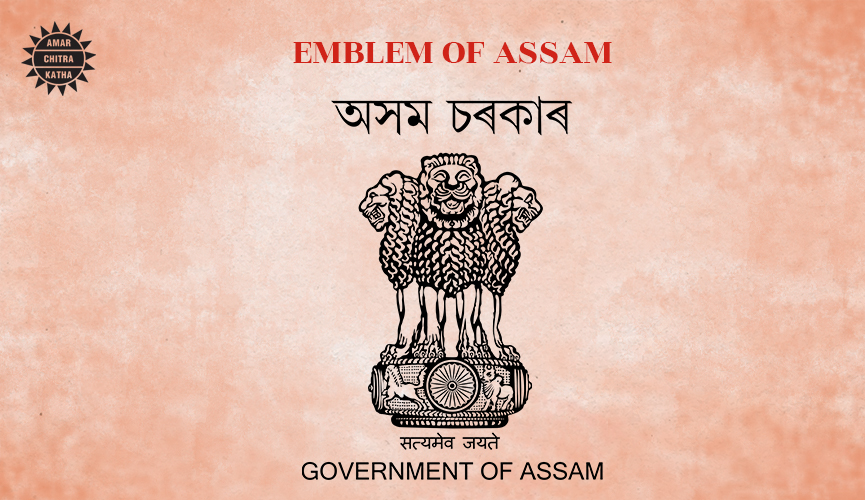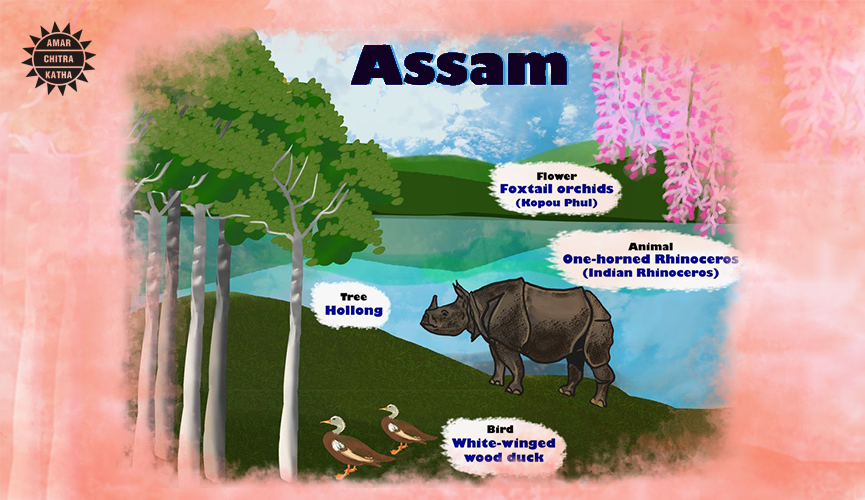The Story of Assam
- June 16, 2022


The Story of Assam
- June 16, 2022
By Srinidhi Murthy
Known for its tea and silk, Assam is located in the northeastern part of India. The state is bordered by Manipur and Nagaland to the east, Arunachal Pradesh and Bhutan to the north, West Bengal to the west and Tripura and Mizoram to the south. Read more to know about the history of Assam.
Assam was ruled by several dynasties such as Varman, Koch, Kachari, Chutiya and Pala from the 4th century to the 19th century. The earliest mention of Assam can be found during the formation of the Varman dynasty by Pushyavarman in the Kamarupa kingdom, in the 4th century. Kamarupa was the first historical kingdom of Assam. The Varman dynasty reached its zenith in the 7th century, under the rule of Bhaskaravarman. The rise of individual kingdoms such as Kachari and Chutia or Sadiya, marked the end of the Varman dynasty in the 12th century. The name Assam is derived from the word ‘asama’, meaning ‘peerless’ in the now extinct Ahom language. Ahom was spoken by the Ahoms, the rulers who came to Assam in 1228. The Ahom dynasty ruled the region for nearly 600 years from 1228 to 1826. In the 16th century, the Ahoms annexed the Chutia kingdom and also took over the Kachari kingdom from Central Assam.
To receive more such stories in your Inbox & WhatsApp, Please share your Email and Mobile number.

The region witnessed the Burmese invasion between 1817 and 1826. There were three invasions from 1821 to 1825, during which the Ahom kingdom came under the control of Burma. In 1824, the first Anglo-Burmese war, also known as the First Burma War, was fought between the British and Burmese empires. By 1825, the British emerged victorious and the Burmese empire lost authority in Assam. As per the Treaty of Yandabo, the Burmese monarch, Bagyidaw, renounced his claim to Assam. In 1826, the British started commercial tea cultivation in Assam after they discovered that the region had favourable climatic conditions which could help them rival China in tea production. Cachar (present-day district in Assam) was annexed by the British in 1832 and Jaintia Hills ( present-day West Jaintia Hills district in Meghalaya) in 1835. Soon, Assam became a separate province in 1874, with Shillong as its capital.
Two years after the Treaty of Yandaboo, Gomdhar Konwar, a prince of the Ahom royal family, revolted against the British in 1828. He was soon suppressed. His followers, Dhananjoy Burhagohain, Jiuram Medhi, and Piyali Phukanrose revolted in 1830. Unfortunately, they were arrested and sentenced to death. In the early 20th century, the anti-colonial Assamese actively supported the Indian National Congress against the British rule in India, with Gopinath Bordoloi emerging as the preeminent nationalist leader in the Assam. Assamese women like Hemanta Kumari Devi Bordoloi, Nalinibala Devi, Bijuli Phukan, and Kiranmayee Agarwalla, also participated in every phase of the freedom movement. They were active participants in the Non-Cooperation Movement in 1920-21, the Civil Disobedience Movement in 1930 and the Quit India Movement in 1942.

Post Independence, the Naga Hills, renamed Nagaland, became the 16th state of India in 1963. In 1970, the districts containing the Khasi Hills, Jaintia Hills, and Garo Hills were formed into an autonomous state within Assam. In 1972, it became a separate state under the name of Meghalaya. Mizoram and Arunachal Pradesh were separated from Assam as union territories in 1972 and both became states in 1986.
Assam is a home to the one-horned Indian rhinoceros, along with the wild water buffalo, tiger and various species of Asiatic birds. The state also provides one of the last wild habitats for the Asian elephant. Assam’s economy is aided by wildlife tourism to Kaziranga National Park and Manas National Park, which are World Heritage Sites. Bihu, a series of three harvest festivals, is the most important traditional festival, celebrated three times a year all over Assam. Assam has produced many authors, poets, activists and politicians including Fakhruddin Ali Ahmed, who served as the fifth President of India, from 1974 to 1977.
To receive more such stories in your Inbox & WhatsApp, Please share your Email and Mobile number.

Comic of The Month
The Naval Journey of India Book I
This book is the first of a three-book series that takes a deep and detailed look at India's Naval History and a deep insight into the lives of our men and women in white. But any series on the Indian Navy has to start at the very beginning - exploring India's celebrated maritime history. Join our little hero, Bharat, and his grandfather, Commodore Sagar, as they sail into the deep blue waters of time. Book I of The Naval Journey of India takes a sweeping look at India's maritime endeavours, how the seas impacted us over millennia and how the oceans made us who we are.